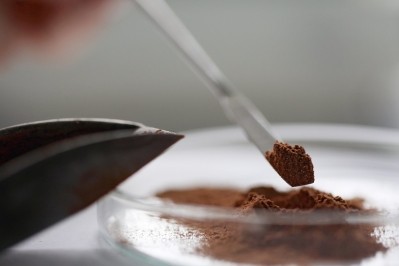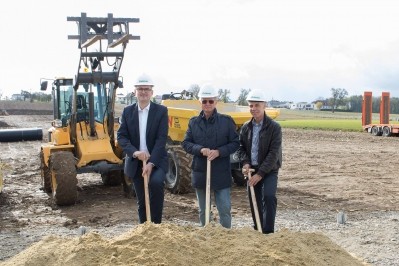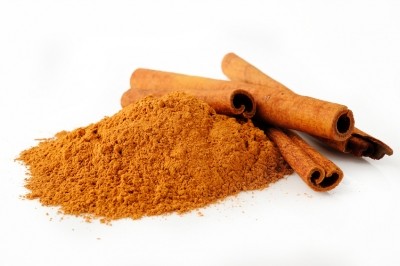Special Edition: IPPE Reports
Delacon: Feed additive understanding, use expands
We caught up with Markus Dedl, Delacon CEO, and Jan Dirk van der Klis, director of product development and innovation, at the International Production and Processing Expo (IPPE) in Atlanta to hear more about the product and market development Delacon has been doing, especially in light of an increased interest in antibiotic-free production.
“We have one big purpose at Delacon and that is driving the phytogenics market forward,” said Dedl.
Internally, the focus is on continuing research and development work, while commercially it includes expanding outreach, he added.
Understanding how phytogenics work is a complex process, he said. “There is no mode of action that is directly killing bacteria, this is just not how phytogenics work. It’s a more complex and more holistic approach and that is important to understand.”
The company receives questions regarding the meaning of phytogenics and use of natural products, he said. “A lot of products which are marketed as phytogenic are in reality sometimes 100% synthetic or single-substance based, which is a very easy approach, because it’s a lot easier to scientifically understand a single substance,” he added.
Phytogenic products that combine elements from multiple plants can be much harder to develop and understand, than ones that are focused on a specific type of ingredient like an essential oil, he said. “Our goal is always to use natural substances because they work better, but they are a lot more difficult to handle, standardize and register,” he added.
“We have seen that the natural substances have a higher effect and a more complex effect than a synthetic single ingredient,” said Dedl. “It’s not about synthetic being bad, it’s just very limited, and you limit yourself to a small basket of substances.”
An additional piece of outreach looks at consumer interest and seeks to provide feed manufacturers and animal producers a narrative regarding the use of phytogenics, he said. “Consumers think positively about natural ingredients that support animal well-being and support animal health like phytogenics … now we’re engaging with how can we make our customers realize the value of that,” he added.
“I think producers in the past have never communicated about feed ingredients to consumers, but now they start doing it,” he said. “They have started doing it because they actually have a story to tell.”
Phytogenic and antibiotic use trends
The company also has been seeing questions regarding the mode of action involved in phytogenic use, said Van der Klis.
“There’s a huge demand in understanding how phytogenics work,” he said. Feed producers who may be considering use of phytogenics want a better understanding of how the feed additives work, rather than simply seeking to use them, he added.
“When we know how it works we start teaching the nutritionists, the producers, the feed producers, poultry producers we start teaching them how it works so they know how to apply it,” he said.
Understanding the mode of action involved in phytogenic performance also helps explain the product those looking to move away from antibiotic use, he said.
“If you check, for instance, how the in-feed antibiotics work it’s the antibacterial effect causing resistance,” said Van der Klis. “What we do with phytogenics, [in an example of one mode of action] we interfere with the cell-to-cell communication of bacteria so that they don’t start producing toxins, so they’re not pathogenic and they do not colonize – we interfere with them in quite a different way.”
Other elements expanding interest in phytogenics may be the ongoing discussion of reducing antibiotic use and increasing regulations governing use, said Dedl.
“Some of the bigger companies out there they were very hesitant to look at antibiotic replacement … even in the US we have not always replaced antibiotics, we have used this product to combine with things that the customer has already in the feed,” he said. “But, in the recent years, this resistance to antibiotic replacement is gone – producers are looking for alternative solutions.”
That trend is expanding in other regions as well, he said.
“Indonesia has banned, at the beginning of this year, antibiotic growth promoters – and it’s one of the first countries in Asia,” he said. “There’s Bangladesh, there’s Vietnam [which] has already banned it, there’s Korea, but there are all these countries that will ban antibiotic growth promotion.”
Market development and expansion
Delacon has had a strong portfolio and presence in the feed additives market for poultry and swine for several years, said Dedl. However, it also has been expanding in other production areas.
“We see a lot of traction in ruminants,” he said. “Especially in the last years, we have really invested in our ruminant portfolio and it is a clear goal of ours to grow – effective growth is very high in ruminants.”
In the US, the company partners with Land O’Lakes, which also drives the interest in ruminant nutrition, he said. “The US is one of our most successful markets” he added.
Southeast Asia also has become a growth market for the company, he said. “It’s one of our other growth markets, but one is clearly the US,” he added.
“We have a lot to do – we have a very strong partnership with PMI [Nutritional Additives] and Purina that is growing annually,” said Dedl. “We’re committed to bringing new products to the market and to extend our market share.”
The company has focused on ways to share knowledge about how phytogenic products work, said Van der Klis. “We started with regional technical managers in the US that collaborate very close with Purina and PMI, explaining to the customers what we have shown about the efficacy, how it works so they know how to apply it,” he added.
“We can advise them on how to combine with other feed additives – or that they should do it separately,” he said. “That is also part of the current focus of Delacon, to make sure that we make our knowledge available to the feed producer.”
The investment in regional technical resources is not just in the US, added Dedl. However, looking at the international market there also has been an interest in different types of animal production.
“Globally, we also work on aquaculture products,” he said. “Part of it is also done within our partnership with Cargill – Cargill is very strong in aquaculture, so this is a natural fit for us to work together on this space and also on a lot of markets. It’s about growing the category on a global level.”















